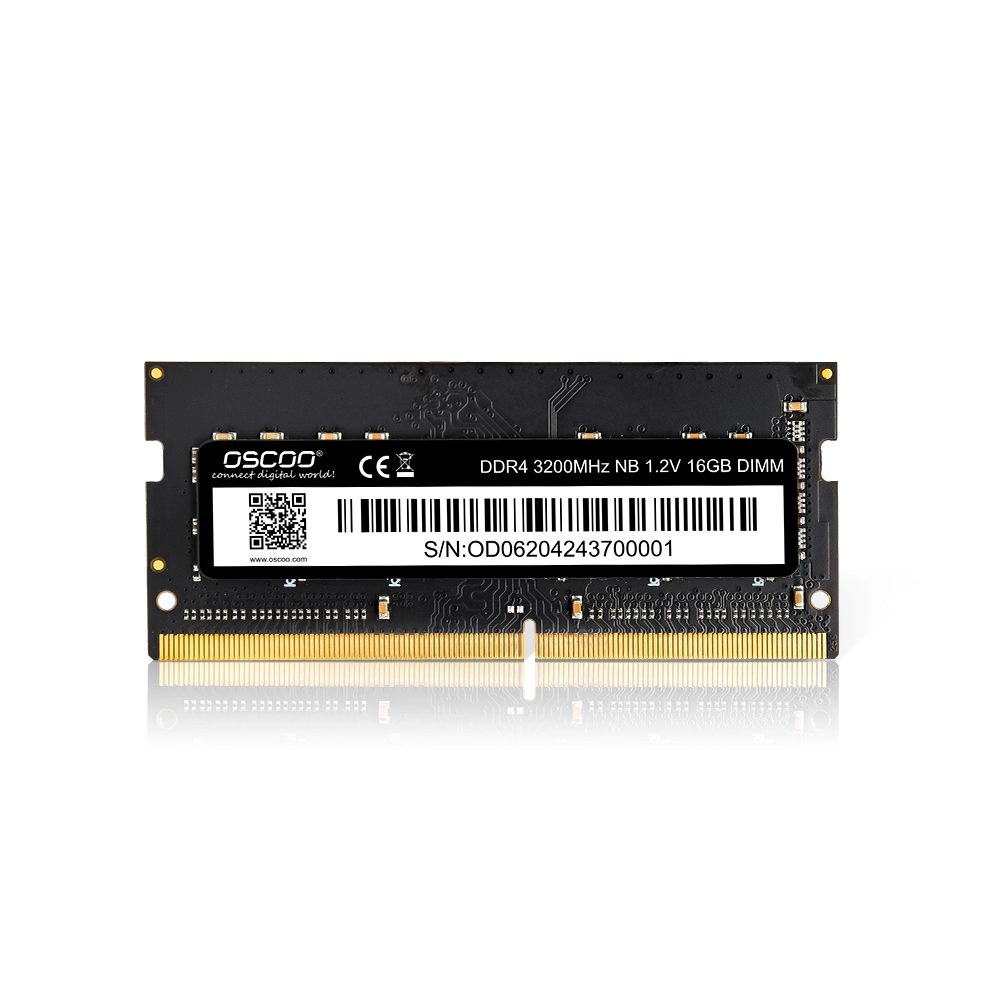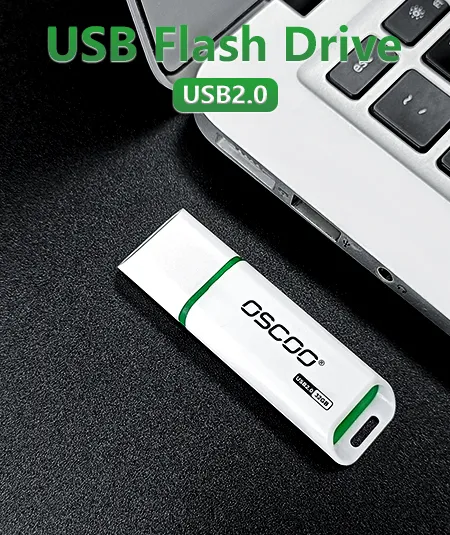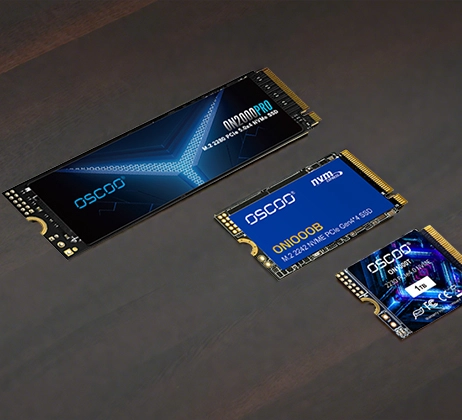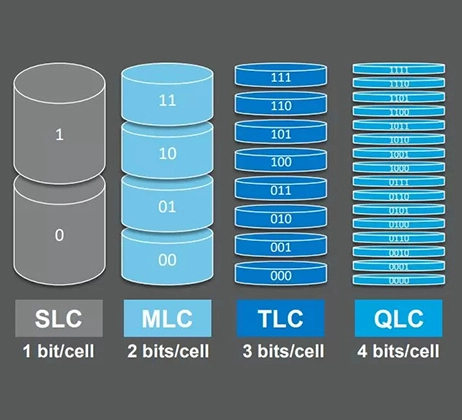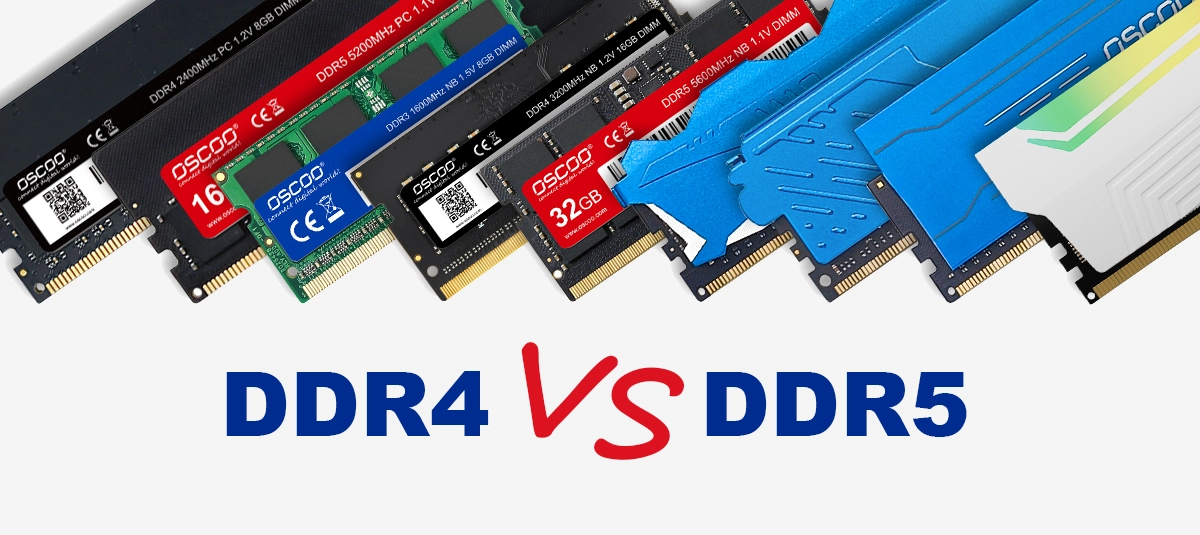
RAM is a core component of computers. It acts as a temporary workspace for the CPU to process data. RAM performance directly impacts overall system speed. RAM technology has evolved from DDR3 and DDR4 to the new DDR5 generation. In 2025, DDR4 remains a significant choice due to its maturity and high cost-effectiveness. DDR5 represents the future direction and is accelerating its adoption. Both coexist in the market. When building a new PC or upgrading an older system, users often need to choose between DDR4 and DDR5. This article provides a detailed analysis of the key differences between these two generations. It combines this with current realities to help you make a suitable choice based on your needs and budget.
Table of Contents
ToggleCore Specifications Overview
| Specification Category | DDR4 RAM (Typical) | DDR5 RAM (Typical) | Core Difference Explanation |
|---|---|---|---|
| Working Frequency | 2133 MHz, 2400 MHz, 2666 MHz, 3200 MHz (Mainstream) | 4800 MHz, 5200 MHz, 5600 MHz, 6000 MHz+ (Start/Mainstream) | DDR5 starts at a much higher frequency than DDR4's common speeds. |
| Transfer Rate (MT/s) | 2133 MT/s - 3200 MT/s (Mainstream), 4000+ OC | 4800 MT/s - 5600 MT/s (Mainstream), 8000+ MT/s (High Perf) | RDDR5 mainstream rates far exceed DDR4 limits, offering higher data throughput potential. |
| Per-Module Capacity Limit | 16GB, 32GB (Mainstream Consumer) | 32GB, 64GB (Mainstream), 128GB+ Available | DDR5 supports larger per-module capacities, simplifying building very large memory systems. |
| Working Voltage (V) | 1.2V (VDD) | 1.1V (VDD) | DDR5 operates at a lower voltage, helping reduce power consumption. |
| Power Management | PMIC located on Motherboard | PMIC integrated on RAM Module | DDR5 has its own PMIC, enabling finer, more stable voltage control. |
| Channel Design | Single Module: 64-bit Single Channel. Requires two modules for Dual Channel (128-bit). | Single Module: Asymmetric Dual Sub-Channels (2 x 32-bit). | DDR5 offers higher internal concurrency efficiency per module. |
| Physical Interface | 284-pin Gold Fingers. Notch centered slightly left. | 288-pin Gold Fingers. Notch centered slightly right. | Physically Incompatible! Different pin counts and notch positions prevent mixing or wrong insertion. |
| Key Feature | On-Die ECC. Support for more advanced XMP/EXPO profiles. | DDR5 enhances internal reliability and overclocking potential. |
Performance: Speed, Bandwidth & Latency
Key performance indicators for RAM are speed, bandwidth, and latency. DDR5 shows significant improvements over DDR4 in these areas. However, differences exist that need attention.
Speed
RAM speed is primarily determined by its operating frequency, measured in megahertz (MHz). Frequency reflects how fast the RAM operates. DDR5 starts high. Mainstream DDR5 products typically begin at 4800MHz. Common speeds include 5200MHz, 5600MHz, 6000MHz, and higher(OSCOO’s R500 DDR5 Ram reaches 6000MHz). In comparison, mainstream DDR4 frequencies center around 2133MHz, 2400MHz, and 2666MHz. Currently, 3200MHz is widely used (OSCOO R200 DDR4 Ram reaches 3600MHz). Overclocking can push DDR4 beyond 4000MHz.
The more critical metric for actual performance is the transfer rate, measured in million transfers per second (MT/s). This directly reflects how many data transfer operations the RAM can complete each second. Thanks to DDR (Double Data Rate) technology, RAM can transfer data on both the rising and falling edges of a clock cycle. Therefore, its effective transfer rate is twice the operating frequency. For example, 3200MHz DDR4 RAM has a transfer rate of 6400 MT/s. DDR5 4800MHz RAM has a transfer rate of 9600 MT/s. Clearly, the mainstream transfer rate for DDR5 starts much higher than the typical upper limit for DDR4. This provides significantly greater data throughput potential for high-performance computing.
Bandwidth
Higher transfer rates enable higher bandwidth (GB/s). Bandwidth is the total amount of data transferred per unit of time. The bandwidth calculation formula is: Transfer Rate (MT/s) * Bit Width / 8. A key innovation of DDR5 is its use of asymmetric dual 32-bit sub-channels per module. DDR4 modules use a single 64-bit channel. This design means:
- A single DDR5-4800 module achieves bandwidth up to approximately 38.4 GB/s.
- A single DDR4-3200 module achieves bandwidth around 25.6 GB/s.
The bandwidth advantage of DDR5 is already evident with just one module. This advantage further increases when building a dual-channel configuration.
Latency
Higher frequencies can sometimes come with higher timing parameters. The core indicator is CAS Latency (CL value). CL represents the number of clock cycles needed to respond to a request. Early DDR5 kits, like DDR5-4800 CL40, did have higher CL values than mainstream DDR4 kits like DDR5-3200 CL16. Actual latency in nanoseconds must be calculated by combining the CL value and frequency: (CL value / Frequency (MHz)) * 2000.
- DDR4-3200 CL16: ~10 ns
- DDR5-4800 CL40: ~16.7 ns
- Current mainstream DDR5-6000 CL30: ~10 ns
This shows that early DDR5 had higher latency. However, current mainstream high-frequency DDR5 kits with optimized timings have real-world latency equal to or even lower than good DDR4 kits.
OSCOO'S High-quality DDR4 & DDR5
Capacity & Expandability
RAM capacity directly determines how much data a system can handle simultaneously and how many programs it can run. DDR5 achieves a significant leap in capacity compared to DDR4. It provides stronger support for meeting growing memory demands.
In the mainstream consumer space, the capacity limit for a single DDR4 module is typically 16GB or 32GB. Larger DDR4 capacities exist but are less common and more expensive. DDR5 was designed from the start to support higher per-module capacities. Currently, mainstream consumer DDR5 modules are commonly available in 32GB and 64GB capacities. Manufacturers have also introduced single 128GB modules, making them a viable option for high-end platforms.
The increase in per-module capacity directly impacts the maximum total system memory capacity. Mainstream DDR5 motherboards typically support total capacities up to 128GB or 192GB. In comparison, mainstream DDR4 platforms usually max out at 64GB or 128GB.
This higher per-module and total capacity support is a significant advantage for professional users and enthusiasts. It benefits those needing large projects like HD video editing, 3D rendering, complex virtual machine environments, and large databases. It makes building very large memory systems on consumer platforms easier and more economical.
Furthermore, DDR5’s technical architecture reserves space for future capacity expansion. As manufacturing processes improve and standards evolve, future DDR5 modules of 256GB or larger become possible. This lays a solid foundation for meeting future application demands.
In short, DDR5 has a clear lead over DDR4 in maximum per-module capacity and total system capacity support. It better meets current and future demands for very large amounts of memory.
Channel Design & Bandwidth Efficiency
In the DDR4 era, optimal performance usually required installing two modules in a matched pair to enable dual-channel mode. Installing only one module halved the memory bandwidth and hurt performance. DDR5 made an important improvement here. Its design means that even a single DDR5 module delivers more efficient data transfer than a single DDR4 module. When you install two DDR5 modules, the system not only leverages the traditional dual-channel advantage but also benefits from DDR5’s inherent efficiency gains. This unlocks much higher bandwidth potential than dual-channel DDR4 systems. DDR5 offers a more efficient path to higher performance levels.
Power Consumption, Voltage & Power Management
DDR5 optimizes power consumption and improves power management design. This positively impacts energy efficiency and stability.
First, DDR5’s standard operating voltage is 1.1 volts. This is lower than DDR4’s 1.2 volts. Lower voltage means DDR5 RAM consumes slightly less power under the same load. This helps improve laptop battery life or makes desktop systems run more efficiently overall.
Second, DDR5 implements a key change: it moves the Power Management Integrated Circuit from the motherboard onto the RAM module itself. This means each DDR5 module has its own dedicated power controller. This design offers benefits:
- More Precise & Stable Power: The RAM can manage its required voltage more independently and accurately, reducing interference from the motherboard for more stable operation.
- Enhanced Overclocking Potential: This independent power control provides a better foundation for achieving higher stable overclocks.
DDR5 offers potential power savings through lower voltage. Its integrated power management enables more stable operation and greater potential. This is good news for users seeking efficiency and performance.
Physical Interface & Compatibility
DDR4 and DDR5 RAM modules have different physical interfaces, making them completely incompatible. You cannot mix them or install them into the wrong motherboard slot. The core indicator of this incompatibility is the position of the notch on the module’s gold finger contacts. If you look closely at a DDR4 module, its notch is positioned slightly left of center along the contact row. A DDR5 module’s notch is positioned slightly right of center. This difference is deliberate to prevent incorrect insertion.
- DDR4 RAM only fits into DDR4 motherboard slots.
- DDR5 RAM only fits into DDR5 motherboard slots.
This physical interface difference means choosing DDR4 or DDR5 RAM fundamentally selects different hardware platforms:
- To use DDR4 RAM, you need a compatible CPU and a DDR4 motherboard.
- To use DDR5 RAM, you need a compatible CPU and a DDR5 motherboard.
Therefore, when upgrading or building a PC, confirm which RAM type your motherboard supports. Buy matching RAM modules. The different notch position is the most intuitive error-prevention identifier.
Reliability & Error Correction (On-Die ECC)
RAM stability is crucial for long-term, trouble-free system operation. DDR5 introduces a technology called On-Die ECC. ODECC aims to improve the reliability and data integrity of the RAM chips themselves. Think of On-Die ECC as a tiny data inspector inside each RAM chip. This inspector’s main job is to detect and automatically correct small, random single-bit data errors occurring within the chip itself. Such errors can be caused by various environmental factors. The core benefit is enhanced inherent stability for the RAM chip operating at high frequencies and densities. It helps reduce system instability caused by minor internal memory errors.
It’s important to note that On-Die ECC is not the same as traditional ECC RAM. Traditional server-grade ECC RAM requires extra dedicated chips on the module. It detects and corrects a wider range of errors and reports them to the operating system. Consumer-grade DDR5 RAM typically only includes On-Die ECC. It operates solely within the RAM chip. It doesn’t add extra chips or report errors to the system. Its goal is to improve chip-level robustness, not provide full server-level error correction and reporting. For general users, On-Die ECC on DDR5 is a beneficial underlying enhancement that helps daily stability. However, it is not a replacement for professional ECC RAM. Server and workstation users requiring high data integrity still need modules with full ECC support.
Overclocking & Configuration (XMP/EXPO Simplified)
To run RAM at its advertised high speed, you typically need to enable a preset acceleration profile in the motherboard BIOS. Intel platforms call this XMP. AMD platforms call this EXPO. For both DDR4 and DDR5, enabling the corresponding XMP or EXPO profile is the simplest and safest way to achieve the RAM’s rated performance. This avoids default low-speed operation.
DDR5’s XMP 3.0 or EXPO offers more preset profile choices. It also supports advanced users saving custom overclock settings directly onto the RAM module. This makes it easier to transfer settings between motherboards. Combined with DDR5’s inherent high-frequency potential, users can more easily achieve performance far exceeding default speeds. Remember, after purchasing high-speed RAM, enabling XMP or EXPO in the BIOS is essential.
2025 Buying Guide: DDR4 or DDR5?
In 2025, DDR4 and DDR5 coexist in the market. Each has clear applicable scenarios. Choosing which generation depends on your specific needs, budget, and intended hardware platform. Here are clear recommendations:
Choose DDR5 in these situations:
- Building a Brand New PC: If you are buying a new CPU and motherboard, choosing DDR5 is necessary and recommended. New platforms support DDR5 exclusively. DDR5 represents the technological direction for the coming years. It unlocks the full potential of new hardware, offers a longer platform lifecycle, and allows future CPU upgrades without replacing RAM.
- Pursuing Peak Performance: If you are a high-resolution gamer, a professional content creator, need to run large software, process massive datasets, or perform scientific computing, DDR5’s high bandwidth advantage delivers significant performance gains and smoother experiences.
- Needing Very Large Memory Capacity: If you plan to build a system exceeding 128GB total RAM, DDR5 provides higher per-module capacities and better platform support for large totals.
- Ample Budget & Future Focus: If price sensitivity is low and you value investing in newer technology with longer platform longevity, DDR5 offers a better performance foundation and future upgrade path.
Choose DDR4 in these situations:
- Strictly Limited Budget: For budget-conscious users, the total platform cost is the primary concern. DDR4 RAM is cheaper. Compatible CPUs and motherboards are usually significantly cheaper than new DDR5 platforms. Money saved can be invested into more critical components like the GPU or a larger SSD for a more balanced performance boost.
- Upgrading an Existing DDR4 Platform: If you currently have a DDR4-compatible motherboard and are generally satisfied with its performance, buying higher frequency or larger capacity DDR4 RAM is the most cost-effective upgrade. It avoids the need to replace the CPU and motherboard.
- Mainstream Applications & Gaming: For everyday tasks, web browsing, media playback, and mainstream gaming at 1080p/1440p, a good DDR4 kit provides a fully fluid experience. The perceived difference compared to entry-level DDR5 is often minimal.
- Specific Low-Latency Optimized Scenarios: In rare cases involving specific applications or older games extremely sensitive to ultra-low memory latency, a well-tuned low-latency DDR4 configuration might perform slightly better. This is a very specialized case in 2025.
Summary
DDR5 RAM represents the cutting edge of current memory technology. It achieves significant advancements over DDR4 in frequency, transfer rate, bandwidth potential, per-module capacity limits, power management, and architecture design. These improvements provide a stronger foundation for high-performance computing, large application processing, and professional creation. In 2025, for users building a new PC, especially those pursuing high performance, productivity, or future upgrade headroom, choosing a DDR5 platform is undoubtedly the more forward-looking decision. It better unlocks the potential of new hardware. Simultaneously, DDR4 remains highly relevant in the market due to its mature ecosystem, exceptional cost-effectiveness, and advantages in specific scenarios. For budget-sensitive users, mainstream application users, gamers on older platforms, or existing DDR4 platform upgraders, DDR4 is still an economical and practical choice. It fully meets everyday and mainstream performance needs.
Frequently Asked Questions
Q: Is DDR5 much better than DDR4?
A: DDR5 provides significant improvements over DDR4 in key areas like raw bandwidth, capacity limits, and power efficiency. It achieves much higher transfer speeds, supports larger single-module capacities, and operates at lower voltage. These advantages translate to noticeable performance gains in demanding workloads such as high-resolution gaming, 4K video editing, and large-scale data processing. However, for general computing tasks, budget builds, or upgrades to existing DDR4 systems, DDR4 remains a highly cost-effective choice with ample performance. DDR5 represents the future and offers superior long-term value for new high-performance systems, but DDR4 still delivers excellent real-world results at lower price points.
Q: Is DDR4 still worth in 2025?
A: No, it’s not outdated. It remains worth buying, especially in specific situations: 1) You have a limited budget and seek maximum cost-effectiveness for the whole system; 2) You are upgrading an existing DDR4 platform; 3) Your main needs are mainstream applications and gaming. DDR4 offers sufficient performance at a better price.
Q: Is DDR5 really worth it?
A: It depends on your needs and budget. It is worth investing in a DDR5 platform if you are building a new machine for high performance/productivity/future-proofing. DDR4 offers higher cost-effectiveness if you are on a tight budget or only need mainstream performance. Remember to consider the total platform cost. DDR5 platforms are usually more expensive.
Q: How to tell if you have DDR4 or DDR5?
A: Three common methods:
- Check the RAM label: Remove a stick; the label usually clearly states “DDR4” or “DDR5”.
- Use software: Tools like free CPU-Z show the “Type” under the “Memory” tab.
- Look at the physical notch (most reliable): Compare the notch position against online images. DDR4 is centered slightly left; DDR5 is centered slightly right.
Q: Can I have both DDR4 and DDR5 RAM?



